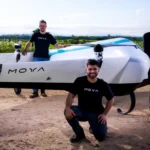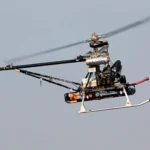Veronte, the first autopilot using Model-Based Design
The customization of the control systems is a key element for the success of a UAV project. Each aircraft has unique characteristics and needs, depending on its structure and the mission entrusted to it. That is why the performance of the control system must be adapted to the requirements of each system. The Veronte Autopilot incorporates this flexibility thanks to model-based design.
Model-based design enables engineers to customize the system using pre-verified and predefined code blocks. This programming model focuses on the existing relationships between the different blocks (PID, energy control, mathematical operations…), thus allowing UAV integration engineers to “not worry” about the content of the block itself.
Advantages of Block-Based Design for UAV control
The use of block-based design for UAV programming is one of the most prominent innovations of the Veronte Autopilot. This programming model endows the UAV integrator with an unimaginable customization capacity for a professional autopilot.
Flexibility: The use of Block-Based Design in the programming of the Veronte Autopilot allows to fully customize the behavior of the UAV. Engineers in charge of integration can create their own flight phases, control laws, automatic routines without the need for programming knowledge.
Safety: The Veronte Autopilot is developed according to the DO178C / ED-12 certification standards. Each of the programming blocks has been developed and verified according to these standards, having the necessary documentation to guarantee the safety and reliability of the system.
Independence: UAV systems are in continuous evolution, being necessary to adapt their benefits to new applications and payloads. The Block-Based Design allows the UAV integrator to make the necessary changes in the programming in a simple and intuitive way, without having to depend on the autopilot manufacturer to make these changes.
Cost reduction: Block-based scheduling allows quick and easy changes to the autopilot, even on the airfield. These changes can be made from the autopilot’s user interface, without the need for software programmers dedicated to customizing the autopilot or complex development environments.

Certification of UAVs using Model Based Design
Veronte Autopilot is developed in accordance with the aeronautical certification standards DO178C / ED-12, DO254 and DO160. In compliance with standards up to the DAL-B level which means an essential element when approaching a UAV certification project.
The use of Model Based Design for the customization of the autopilot allows all types of aircraft (multirotor, VTOL, fixed wing, gyroplane …) to share the same source code, significantly reducing the effort required for certification.
The programming blocks in Veronte Autopilot are developed and verified according to the DO331 standard, which includes all the aspects that address “Model-Based Design” in aviation. All this in order that any program built from these blocks also complies with the DO178B standard.
Model Based Design has been the result of Embention’s years of experience working with autopilots and certification programs. This technology incorporated into the Veronte Autopilot has set a precedent in the industry thanks to its adaptability, while maintaining compliance with the strictest UAV certification standards.




